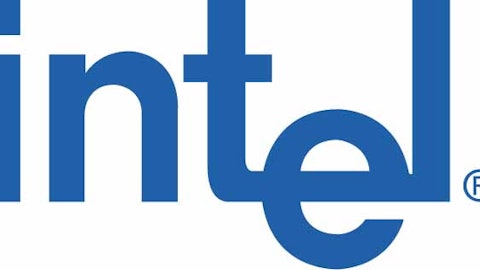 The Internet of Things is about to get a little smaller. Make that a lot smaller — so small you could put it on a pill and become a thing on the Internet yourself.
The Internet of Things is about to get a little smaller. Make that a lot smaller — so small you could put it on a pill and become a thing on the Internet yourself.
Freescale Semiconductor Ltd (NYSE:FSL) unveiled a new ARM Holdings plc (ADR) (NASDAQ:ARMH)-based microcontroller chip last month, dubbed the Kinetis KL02,
that has everything necessary on board to produce, track, record, and analyze the essential information that device creators might need in a package smaller than your pinky toenail. That’s it over to the left — all 1.9 millimeters by 2 millimeters of it.
Freescale’s hardly the first chipmaker to step into the Internet of Things arena. A number of chips are already working in a number of devices, from wearable fitness trackers to the upcoming Google Inc (NASDAQ:GOOG) Project Glass, making the Internet feel more like a part of your body. Texas Instruments Incorporated (NASDAQ:TXN) has gotten small and simple with bare-bones Wi-Fi chips that could pair with Freescale’s microcontroller to transmit information — if only they were a little bit smaller. No one has come up with something this small yet, and there’s a reason Freescale believes that the tiny new Kinetis micro-controllers could be used to track users’ health from inside their own bodies:
 Source: Freescale Semiconductor.
Source: Freescale Semiconductor.
The drawback to this chip, which Freescale claims is 25% smaller than any other ARM-based microcontroller, is that it might actually be too small to pair with existing Wi-Fi chips — Freescale doesn’t include wireless connectivity on the Kinetis, for obvious reasons. For comparison (although there’s no real sense of scale, unfortunately), this is TI’s flagship Internet of Things Wi-Fi chip:
 Source: Texas Instruments.
Source: Texas Instruments.
It may be a little tough to compare the size between pictures (just how small is that washing machine?), but TI’s product description places the size of this chip at 16.3 millimeters by 13.5 millimeters. That’s almost 60 times the surface area of Freescale’s mini-microcontroller. Intel Corporation (NASDAQ:INTC) has also been working on tiny Wi-Fi chips for years, but the greatest obstacle to scaling down in a manner approaching other chips is the continued use of analog components, which aren’t subject to the same Moore’s Law miniaturization processes governing transistors. Intel unveiled what it called “the first complete Wi-Fi digital radio” last year at its developer forum, and the commercialization of such a product would easily make tiny communicable computers-on-a-pill real and effective.
There are bound to be plenty of uses for this tiny microcontroller, even if Freescale has to make do without a paired Wi-Fi chip for the time being. General Electric Company (NYSE:GE) has been developing its own version of the Internet of Things, called the “industrial Internet,” and dozens (or hundreds) of tiny Freescale chips might serve as a distributed sensor network in jet engines, wind turbines, or MRI machines, each connected to a central transmitter. Or the devices might be used to monitor manufacturing lines, with a chip attached to each component and scanned as it moves through the process. Even so, these chip-without-a-connection ideas are only going to be stopgaps on the road to the ultimate goal: man and machine, two great things that go better together.
How long will it take from the first implanted microcontroller to the first Star-Trek-like cyborg? Maybe we’ll find out soon enough.
The article This Tiny Chip Will Stake a Big Claim on the Internet of Things originally appeared on Fool.com.
Fool contributor Alex Planes owns shares of Intel. Add him on Google+ or follow him on Twitter, @TMFBiggles, for more insight into markets, history, and technology.The Motley Fool recommends Google and Intel and owns shares of General Electric, Google, and Intel.
Copyright © 1995 – 2013 The Motley Fool, LLC. All rights reserved. The Motley Fool has a disclosure policy.
